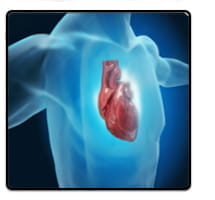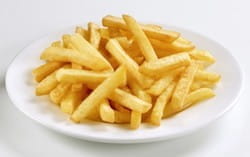 Protein is an essential macronutrient. We can’t make it. We need to consume protein to stay healthy, fit, happy, and long-lived. But we need to consume the right amount at the right times.
Protein is an essential macronutrient. We can’t make it. We need to consume protein to stay healthy, fit, happy, and long-lived. But we need to consume the right amount at the right times.
Age
The elderly aren’t as efficient at processing protein. An older person is going to need more protein than a younger person – all else being equal. That goes for resistance training oldsters, puttering around the garden oldsters, and taking an hour to walk around the block oldsters. More protein is better than less.
You’re always hungry.
Of all the macronutrients, protein is the most satiating, and high-protein diets (which are usually also low-carb) are most efficient in reduction in calories. You don’t consciously stop eating. You’re not fighting your desire for food. You simply don’t want it. That’s the perfect antidote to insatiable hunger.
Just try it. Make a point to add an extra 20 grams of protein each meal. So if your stomach resembles a bottomless pit, try increasing your protein intake.
You’re cutting calories.
Traditional calorie-restricted dieting certainly can help you lose body weight, but it also causes the loss of lean muscle mass. That explains why so many people who simply reduce calories to lose weight end up skinny-fat. Luckily, increasing the amount of protein you eat can offset some of the muscle loss caused by calorie restriction.
You’re lifting heavy weights.
With resistance training you can leverage higher protein intakes into more muscle mass and greater strength gains. The more protein available, the greater the response.
You’re exclusively eating plant protein.
For the most part, plant proteins are less efficient than animal proteins. They’re often missing essential amino acids. So increase your overall protein intake to make up for the inefficiencies of plant protein.
You’re engaged in chronic cardio.
If you’re doing endurance training, you’re going to need more protein to stave off the loss of muscle.
You’re craving meat.
Animal research suggests that a specific appetite for protein exists in mammals. So if you’re craving meat, give into it. Don’t ignore the craving.
You’re eating lots of muscle meat.
Muscle meat is a rich source of methionine, the amino acid that is supposed to be carcinogenic, inflammatory, and anti-longevity. Animal studies show that “methionine toxicity” can be countered by glycine supplementation from cartilaginous cuts of meat.
You’ve got achy joints.
Increase omega-3 consumption because that quickly curtails inflammation. Next option is to consume gelatin. Gelatin is connective tissue; it’s made of the stuff we use to repair and build our own cartilage, tendons, ligaments, and fascia. A few studies indicate that eating gelatin can improve joint pain:
You’re on bed rest.
Bed rest eats at lean muscle mass. It makes sense from your body’s point of view; since you aren’t using it, you don’t really need it. Placing individual limbs on bed rest also has the same effect. The answer is to increase your protein intake to mitigate the inefficiency.
You’re experiencing chronic stress.
Stress hormones increase muscle and tissue protein breakdown. If you’re experiencing an acute stressor, like a tough workout, this breakdown is normal and necessary and gives way to muscle buildup. That’s how we get stronger, faster, fitter, and more capable. But if that stress becomes chronic, and the stress hormones are perpetually elevated, the balance tips toward muscle breakdown. Until you’re able to get a handle on the stress, eating more protein should mitigate the damage and might even reduce the stress itself.
You’re coming off surgery, recovering from burns, or trying to heal a wound (or all three).
Traumatic damage to your tissues requires more protein to make the necessary repairs and recovery.
Stay Healthy.



 Protein is an essential macronutrient. We can’t make it. We need to consume protein to stay healthy, fit, happy, and long-lived. But we need to consume the right amount at the right times.
Protein is an essential macronutrient. We can’t make it. We need to consume protein to stay healthy, fit, happy, and long-lived. But we need to consume the right amount at the right times.

